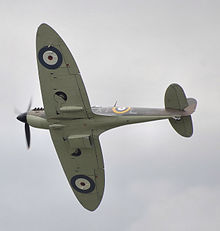
British shadow factories were the outcome of the Shadow Scheme, a plan devised in 1935 and developed by the British government in the buildup to World War II to try to meet the urgent need for more aircraft using technology transfer from the motor industry to implement additional manufacturing capacity.
The term 'shadow' was not intended to mean secrecy, but rather the protected environment they would receive by being staffed by all levels of skilled motor industry people alongside (in the shadow of) their own similar motor industry operations.
A directorate of Aeronautical Production was formed in March 1936 with responsibility for the manufacture of airframes as well as engines, associated equipment and armaments. The project was headed by Herbert Austin and developed by the Air Ministry under the internal project name of the Shadow Scheme. Sir Kingsley Wood took responsibility for the scheme in May 1938, on his appointment as Secretary of State for Air in place of Lord Swinton.
Many more factories were built as part of the dispersal scheme designed to reduce the risk of a total collapse of production if what would otherwise be a major facility were bombed though these were not shadow factories.
